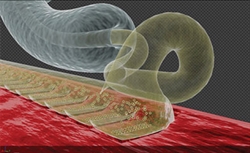 Dr. Ivet Bahar comments on the MMBioS collaboration in a Genetic Engineering & Biotechnology News article:
Dr. Ivet Bahar comments on the MMBioS collaboration in a Genetic Engineering & Biotechnology News article:
The National Center for Multiscale Modeling of Biological Systems (MMBioS) is a joint effort between the University of Pittsburgh, Carnegie Mellon University, the Pittsburgh Supercomputing Center, and the Salk Institute for Biological Studies.
MMBioS makes use of so called Big Data to develop multiscale simulations to bridge molecular events and disease and organ functions, as well as sustaining technology development projects in molecular modeling, cell modeling, and image processing.
Dr. Bahar states:
“This phenomenal type of joint effort is very useful. The problems we are dealing with are much more complicated that an individual laboratory can handle. Our role is to build the technology, which we devise in response to existing research needs and challenges.
The computations we develop are very fast, efficient, and inexpensive so in silico experiments can minimize the wet lab benchtop effort. Computations serve two important roles: they help interpret experimental data in the framework of well-defined quantitative models and methods, and they help build new hypotheses, which are then tested experimentally.”
Labant, MaryAnn (2015) “Big Sequencing Beclouds Big Data” Genetic Engineering & Biotechnology News Vol. 35, No. 11.
http://www.genengnews.com/gen-articles/big-sequencing-beclouds-big-data/5513/

 Prof. Benos, Department of Computational and Systems Biology, University of Pittsburgh School of Medicine, in collaboration with Prof. Glymour, Department of Philosophy, Carnegie Mellon University, has been awarded $1.3M from the National Institutes of Health to develop efficient graphical algorithms to model causal relationships in large, multi-modal datasets. Together with UPCI researchers, Prof. Benos’ group will use these algorithms to address important problems in metastatic melanoma.
Prof. Benos, Department of Computational and Systems Biology, University of Pittsburgh School of Medicine, in collaboration with Prof. Glymour, Department of Philosophy, Carnegie Mellon University, has been awarded $1.3M from the National Institutes of Health to develop efficient graphical algorithms to model causal relationships in large, multi-modal datasets. Together with UPCI researchers, Prof. Benos’ group will use these algorithms to address important problems in metastatic melanoma.